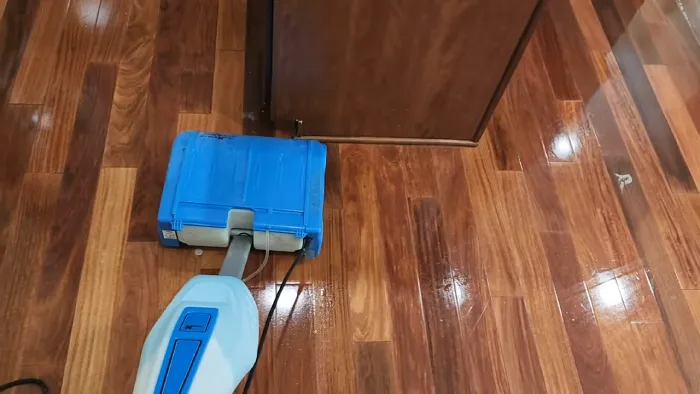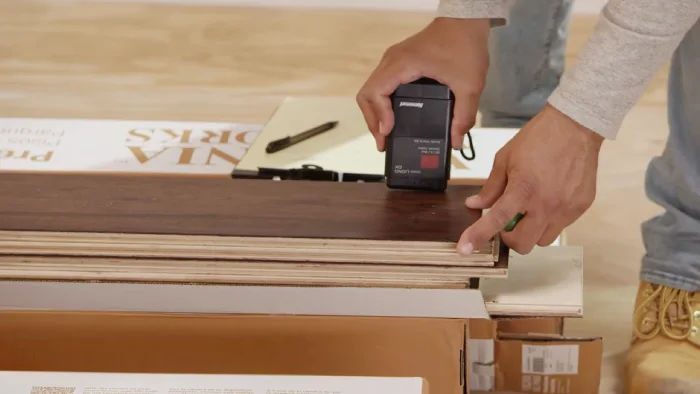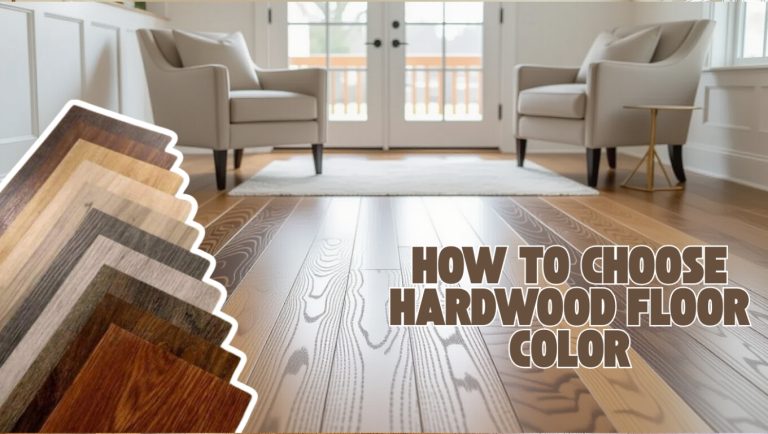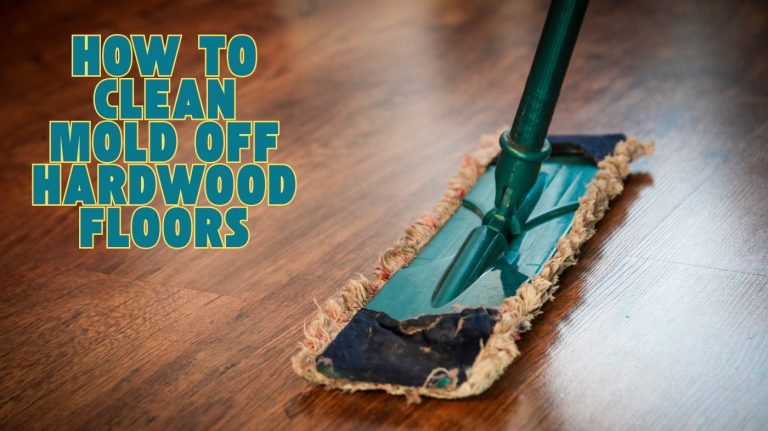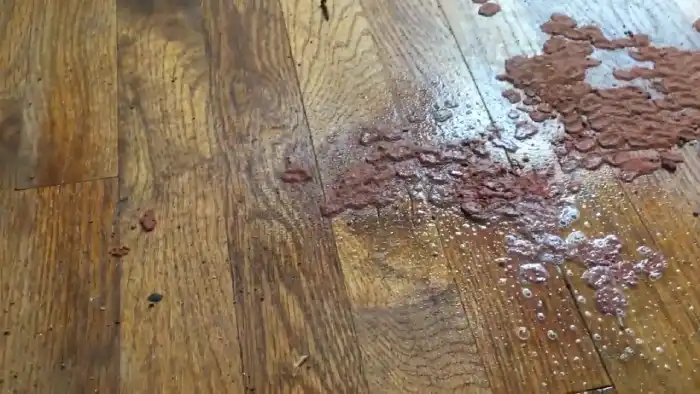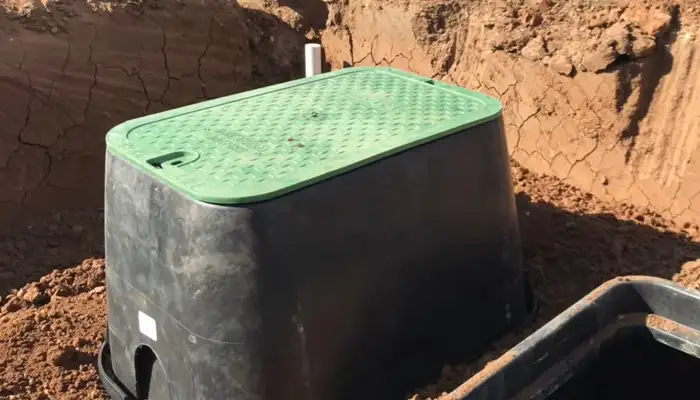How to Clean Prefinished Hardwood Floors: 5 Steps [Easy DIY]
Prefinished hardwood floors, beloved for their resilience and ease of upkeep, are a smart choice for homeowners who value durability and aesthetic appeal. That being said, cleaning these floors is crucial to their longevity and beauty.
Even though prefinished hardwood floors require less maintenance than other flooring materials, regular cleaning is essential to preserve their shiny finish. Thankfully, cleaning prefinished hardwood floors is not as overwhelming as it may seem, especially with a few simple steps to follow.
To clean prefinished hardwood floors, prepare your cleaning solution, and select the perfect cleaning tool. Don’t forget to sweep and vacuum your floors before you begin. Once you’re done, mop your way to flawless floors with the cleaning solution, and enjoy the results.
Continue reading for more detailed information on each of these steps as well as everything you need to know about cleaning prefinished hardwood floors.
How to Clean Prefinished Hardwood Floors: 5 Easy Steps
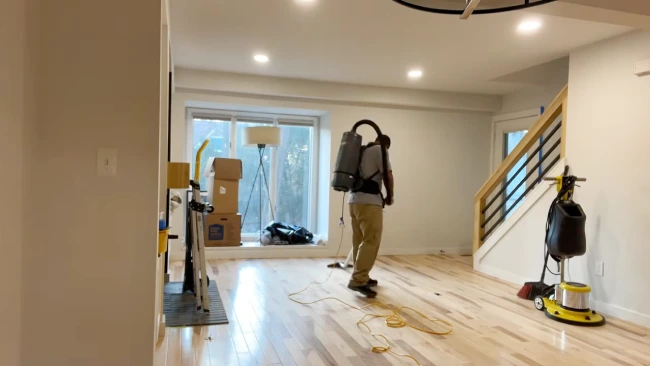
Maintaining the sleek look of your prefinished hardwood floor is crucial for a beautiful home. Properly cleaning and preserving its finish can guarantee it stays stunning. Don’t let neglect ruin your floors’ appeal. Follow the steps for pristine upkeep:
Step One: Preparing Your Cleaning Solution
You must prepare an effective cleaning solution for your prefinished hardwood floors. This will ensure that all dirt and grime are removed without damaging the finish or surface of the wood.
You should be aware that harsh chemicals and abrasive cleaners can strip your flooring’s protective layer, leaving it vulnerable to scratches.
One way to create a safe and efficient solution for prefinished hardwood floors is by mixing warm water with vinegar or dish soap. Both options are gentle enough not to harm the finish but strong enough to remove stubborn stains and dirt build-up.
Alternatively, you can purchase specialized floor cleaners designed specifically for prefinished hardwood surfaces from your local hardware store.
When preparing your cleaning solution, follow the instructions carefully if you use a commercial product. Some products may require dilution before use, while others may need to be applied directly onto the floor without any additional water.
Step Two: Choosing The Right Cleaning Tool
Different types of cleaning tools available in the market can be used to clean prefinished hardwood floors. It is important to choose the right tool as it plays a crucial role in maintaining the shine and durability of your flooring. Choosing the wrong cleaning tool can cause scratches, dents, or even discoloration.
One popular option for cleaning prefinished hardwood floors is microfiber mops. These mops have soft fibers that trap dirt and dust particles without leaving residue. They also come with detachable mop heads, which can be washed easily in a washing machine after use.
Microfiber mops are gentle on the floor surface and do not require harsh chemicals for effective cleaning.
Another suitable option is a vacuum cleaner with a soft brush attachment. This tool removes pet hair, debris, and other small particles from the floor without causing damage or scratching it. Vacuum cleaners are ideal for those who want to avoid using water-based solutions for cleaning their prefinished hardwood floors.
Step Three: Sweeping And Vacuuming the Prefinished Hardwood Floors
Sweeping and vacuuming are essential to maintain the quality of prefinished hardwood floors. These methods remove dirt, dust, and other debris that can cause scratches or damage to the finish. Following some tips while sweeping or vacuuming is important to not harm your flooring.
First of all, use a broom with soft bristles or a microfiber mop for sweeping, as it will help avoid scratches on the surface of your floor. Avoid using traditional straw brooms as they tend to scratch the surface when used aggressively.
Additionally, make sure that there are no foreign objects stuck in between the bristles of your cleaning tool, as these could also result in scratching your floor’s surface.
Also, sweep or vacuum at least once every day if possible to ensure maintenance of cleanliness standards without causing any damage.
Step Four: Mopping With the Solution
After sweeping and vacuuming your prefinished hardwood floors, it’s time to move on to mopping.
To start, ensure you’re using a mop specifically designed for use on hardwood floors. Microfiber mops are popular as they are gentle but effective at picking up dirt and debris without scratching the surface.
Avoid using traditional string mops or steam cleaners, which can cause water damage and leave streaks behind.
The solution you use outlined in step one should be poured into a bucket and thoroughly mixed. Dip your mop into the solution, but do not over-saturate it.
Once you’ve finished mopping, allow the floor to air dry, or use a clean microfiber cloth to remove any excess moisture.
Step Five: Cleaning High Traffic Areas
High-traffic areas are those places in your home where foot traffic is concentrated and can cause a buildup of dirt and grime over time.
To keep these areas looking their best, you should establish a regular cleaning routine that includes sweeping or vacuuming at least once daily.
In addition to daily sweeping or vacuuming, it’s also important to mop the floors regularly using a cleaner specifically designed for prefinished hardwood surfaces.
Suppose you notice any stubborn stains or scuff marks on your prefinished hardwood floors in high-traffic areas. If that’s the case, there are specific products that can help. However, you should always check with the flooring manufacturer before using any new product on it to ensure it won’t void any warranties.
How to Remove Stubborn Stains And Spots from Prefinished Hardwood Floors?
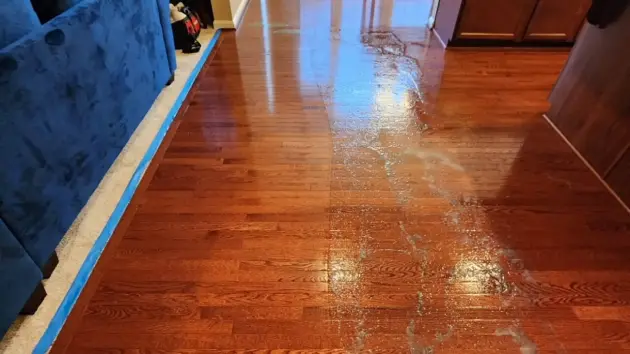
Regarding prefinished hardwood floors, stubborn stains and spots are bound to happen despite our best efforts. However, removing these blemishes can be a breeze with the right techniques.
Here are some tips on how to tackle those pesky marks:
Soapy Water: To begin with, dab a clean cloth with warm water and gentle soap over the affected area for lighter stains such as tea or coffee spills. Avoid using too much liquid, as this can seep into the seams of your flooring and cause damage in the long run. Once you’ve wiped away the stain, dry thoroughly with another clean towel.
Rubbing Alcohol: For tougher stains like ink or oil-based substances, use rubbing alcohol instead of water and soap. Soak a piece of cloth in undiluted alcohol and press onto the spot until it lifts away from your flooring. Be careful not to rub vigorously as this might scratch your floor’s surface.
For pet urine stains: sprinkle baking soda over the stained area and let sit overnight before vacuuming up.
For red wine spills: mix equal parts white vinegar and water, then apply onto the stain using a clean cloth.
For grease or wax spills: place an ice pack over the spillage until hardened, then gently scrape off using a plastic scraper tool.
Also, some stains may require more than just household solutions. In cases where all else fails, consult with professional cleaners who specialize in cleaning prefinished hardwood floors to ensure that no further damage is done while attempting to remove tough marks.
How to Deal With Water-Damaged Prefinished Hardwood Floors?
Dealing with water damage on prefinished hardwood floors can be a daunting task.
Step 1. Identify the source of the water and address it immediately. This may require turning off the main water supply, fixing any leaks, or calling in professional help if necessary.
Step 2. Once the source of the water has been addressed, it’s important to remove any standing water from the floor as quickly as possible. Use towels or a wet/dry vacuum to soak up as much water as you can.
Avoid using a regular household mop or bucket, as this can push moisture into the wood grain and cause further damage.
Step 3. After removing all standing water, allow the floor to dry completely before attempting any repairs. Depending on the extent of the damage, this may take several days or even weeks.
During this time, use fans and dehumidifiers to speed up the drying process and prevent mold growth.
Step 4. Once fully dried out, assess any remaining damage and make any necessary repairs, such as sanding down rough spots or replacing damaged planks.
Importance of Regular Cleaning of Prefinished Hardwood Floors
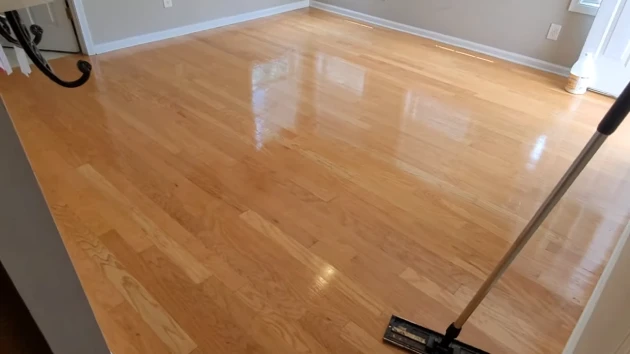
Regular cleaning of prefinished hardwood floors is an important aspect of maintaining their aesthetic appeal and durability. Dirt, dust, or debris accumulation on the surface can cause scratches that may lead to permanent damage over time. Regular cleaning will help prevent such damage from occurring.
Besides its protective benefits, regular cleaning helps maintain a healthy indoor environment by minimizing allergens such as pet dander and pollen. These particles tend to accumulate on surfaces, including floors.
Therefore, frequent vacuuming or sweeping followed by damp mopping can significantly reduce these irritants in your home.
How Often to Clean Your Prefinished Hardwood Floors
To keep your prefinished hardwood floors looking their best, it’s important to clean them regularly. But, it’s recommended that you clean these types of floors once every two weeks.
While regular cleaning is important, there may come a time when more intensive maintenance is required. For example, if your floors are looking particularly dirty or scratched, you might need to use a floor buffer machine or hire professional cleaners to restore them to their former glory.
Always remember that prevention is better than cure, so be careful with heavy furniture and don’t wear high heels indoors.
Does Swiffer wet work on prefinished hardwood floors?
Swiffer Wet is indeed a safe and effective option for cleaning prefinished hardwood floors. Using either wet or dry refill cloths will not damage the flooring but rather provide a thorough and efficient cleaning experience.
Moreover, the Swiffer wet formulation is engineered to eliminate dirt and grime while leaving behind a streak-free shine. This implies that using the Swiffer wet on prefinished hardwood floors will safeguard the surface and provide a deeper clean.
Can Bona be used on prefinished hardwood floors?
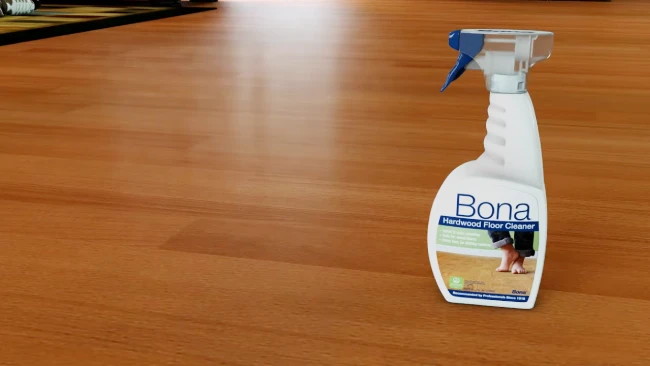
It’s safe to use Bona on prefinished hardwood floors. In fact, it is recommended for use on such wood flooring types. The product is designed to work effectively on all types of unwaxed, residential, and commercial polyurethane-finished wood floors, including those prefinished with aluminum oxide.
Unlike some other cleaning products, Bona leaves no dulling residue and is safe for use on wood floors. This ensures that your prefinished hardwood floors remain clean and well-maintained and that their original finish is not damaged or compromised.
Do steam mops work on prefinished hardwood?
Steam mops should not be used on prefinished hardwood floors. While they may seem like a convenient and effective cleaning tool, the drastic temperature changes and moisture from the steam can cause warping and damage to the wood.
This is true for both solid and engineered hardwood floors, as well as bamboo. Use fiber cloths that is alternative of steam mop specifically designed for hardwood floors to maintain their appearance and integrity.
Effortlessly Care for Prefinished Hardwood Floors
Caring for prefinished hardwood floors is no small task, but with some knowledge and effort, you can keep your floors looking like new. One of the most important things to understand is the type of finish used on your floors.
Whether your floors are finished with polyurethane or oil-based products, a correct cleaning method is important to maintain their beauty. Consistency is also important, with regular maintenance and preventative measures helping to keep floors pristine and damage-free.
Using microfiber mops and soft-bristled vacuums and placing rugs and mats to prevent scratches are all ways to extend the life. So now that you know how to clean prefinished hardwood floors, it’s time to get started.

